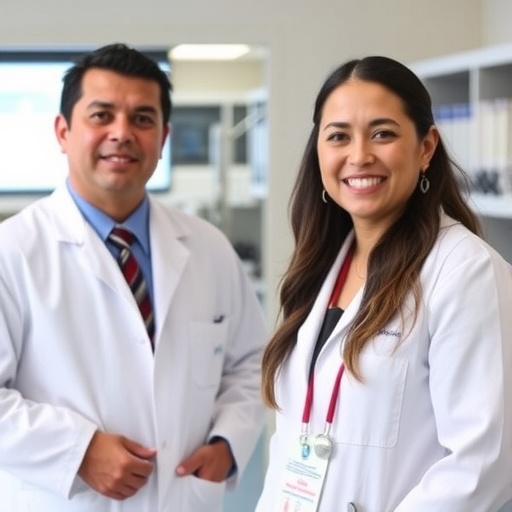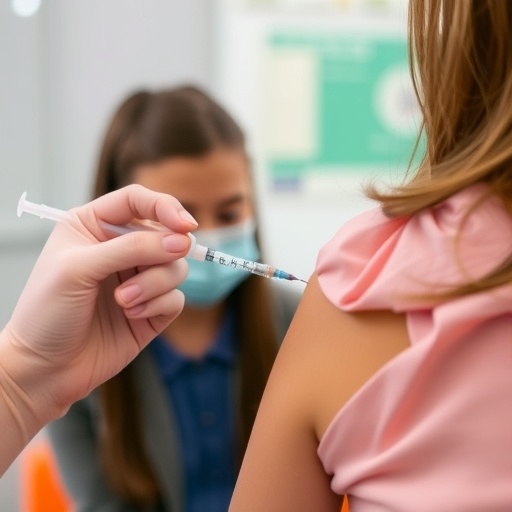For decades, the Indian Health Service (IHS) has grappled with chronic underfunding, a persistent issue that profoundly affects the health outcomes and life expectancy of Indigenous populations across the United States. A team of researchers from the University of Oklahoma, led by Dr. Junying Zhao, has recently published a pivotal commentary in Health Affairs proposing an innovative financial mechanism aimed at closing this critical funding gap. Their work sheds light on the longstanding disparities in federal health spending and offers a sustainable model to elevate health care access and quality for millions of Indigenous Americans.
Indigenous communities have endured systemic neglect in health care investment, resulting in alarming disparities in life expectancy and health outcomes. Dr. Zhao emphasizes that Indigenous Americans currently experience a life expectancy of just 67.9 years, nearly ten years shorter than the national average. This stark discrepancy is symptomatic of the relentless underfunding of the IHS, which manifests in severe staff shortages, aging infrastructure, and deferred or declined care—a reality that undermines the fundamental trust responsibility of the U.S. government to provide adequate health care in exchange for tribal lands.
A comparative analysis of federal per capita spending on health programs reveals the magnitude of this inequity. During fiscal year 2021, funding for the IHS stood at a mere $4,140 per capita—a figure far below that allocated to other federal health programs. For context, the Bureau of Prisons received $8,302 per capita, Medicaid $8,908, the Department of Veterans Affairs $12,223, and Medicare topped $15,094. This disparity highlights a clear undervaluation of Indigenous health care needs within the federal budgetary framework, exacerbating existing health disparities among Indigenous populations.
In a groundbreaking proposal, Dr. Zhao and colleagues advocate for the establishment of an Indian Health Service Trust Fund, modeled after the Vaccine Injury Compensation Trust Fund. This fund, originally created through a one-time congressional appropriation and sustained by excise taxes on vaccine sales, now holds over $4 billion and serves as a financial reservoir for vaccine-related injury claims. Adapting this financial model for the IHS could ensure consistent and reliable funding, circumventing the unpredictability of annual congressional appropriations and political flux.
The financial mechanics underpinning the proposed IHS Trust Fund are critical to understanding its viability. Historical data indicates that from fiscal years 2009 to 2020, the IHS suffered an annual funding deficit approximating $60 million. To achieve an equivalent annual return from an investment fund, researchers estimate an initial principal of around $600 million would be necessary, assuming a conservative 10% investment return. Adjusted for inflation and evolving economic conditions, the current capital requirements could approach $1 billion, underscoring the scale of resources required to sustainably meet the unmet health needs within Indigenous communities.
Launching such a fund would necessitate a one-time congressional appropriation. However, Dr. Zhao’s team also underscores the importance of legislative reforms permitting the IHS to accept gifts and donations—a relatively unexplored avenue in government health finance. Historically, government entities are restricted in their ability to accept private contributions; nonetheless, the IHS previously maintained a policy to receive donations, offering a precedent to be revisited and expanded. Enabling gift acceptance could diversify funding streams, fostering partnerships with philanthropic organizations and private stakeholders invested in Indigenous health.
Comparative institutional models, such as university endowments supporting capital projects and ongoing operations, provide further legitimacy to this approach. Dr. Pallab Ghosh of the OU Department of Economics, a co-author of the study, highlights the parallelism of endowment management in stabilizing financial resources over time. By adopting such a strategy, the IHS could insulate its health services funding from political vicissitudes, enabling long-term planning and strategic investments in care delivery infrastructure and workforce development.
The Indian Health Service is a complex ecosystem comprising direct IHS facilities, tribally administered health services, and urban Indian health organizations, collectively serving approximately 2.6 million Indigenous Americans. Past legislative efforts aimed at addressing IHS underfunding have struggled to gain traction. Notably, two congressional proposals sought to convert IHS funding from discretionary to mandatory—an approach designed to guarantee baseline funding levels—yet both failed to secure the necessary support. Similarly, initiatives to establish tribe-specific Medicaid programs have stalled, reflecting the complicated policy environment governing Indigenous health care finance.
The longstanding trust responsibility of the United States towards tribal nations, enshrined since the late 18th century, imposes a federal obligation to provide health care in exchange for tribal land cessions. Despite this legal and ethical commitment, chronic underfunding has constrained access, leaving many Indigenous individuals reliant on underresourced public services or forced to forgo care altogether. The proposed trust fund aims to rectify this broken covenant by securing a stable, dedicated funding mechanism that aligns with the nation’s trust obligations.
Beyond fiscal reform, Dr. Zhao and her team bring decades of experience in public health research, particularly focusing on underserved groups. Their work exemplifies applied health science that transcends academic theory, offering pragmatic solutions with the potential to transform health care delivery for Indigenous people. Dr. Dale Bratzler, Dean of the OU Hudson College of Public Health, underscores the significance of this research as emblematic of the college’s mission to confront health inequities through innovative, evidence-based strategies.
The implications of establishing an Indian Health Service Trust Fund extend beyond financial metrics. By stabilizing funding, the IHS would be better positioned to address critical staffing shortages, modernize aging facilities, and expand access to preventive and specialized care. This, in turn, could catalyze improvements in health outcomes and narrow the persistent life expectancy gap. Moreover, institutional financial independence could empower tribal health programs to tailor services more effectively to community-specific needs, fostering sovereignty and self-determination in health care administration.
The financing proposal also invites a broader discourse on the intersection of health economics, public policy, and Indigenous rights. As federal budgets face increasing pressures and competing priorities, innovative funding models like the IHS Trust Fund demonstrate alternative pathways to fulfill longstanding governmental obligations. The researchers’ work challenges policymakers to rethink traditional approaches to health care funding for marginalized populations, advocating for mechanisms that ensure predictable, sustainable resources in perpetuity.
In sum, the University of Oklahoma research team’s proposal to establish an Indian Health Service Trust Fund offers a technically sound, economically viable, and ethically imperative solution to the chronic underfunding of Indigenous health care. By leveraging lessons from existing federal trust funds and incorporating legal reforms to enable diverse funding streams, this approach could fundamentally alter the landscape of Indigenous health services. Ultimately, it offers a beacon of hope for rectifying entrenched health inequalities and honoring the nation’s trust responsibilities in a manner befitting a modern, equitable society.
Subject of Research:
Article Title: The Indian Health Service Is Chronically Underfunded. Here Is How To Close The Gap
News Publication Date: 2-Sep-2025
Web References: http://dx.doi.org/10.1377/forefront.20250827.319208
Image Credits: University of Oklahoma
Keywords: Health care delivery, Indigenous peoples, Government
Tags: addressing underfunding in IHScommentary in Health AffairsDr. Junying Zhao research contributionsfederal health spending disparitiesimproving healthcare access for Indigenous populationsIndian Health Service funding issuesIndigenous health disparities in the USinnovative financial mechanisms for healthcarelife expectancy of Indigenous Americanssustainable models for health equitysystemic neglect in healthcare investmentUniversity of Oklahoma health research





